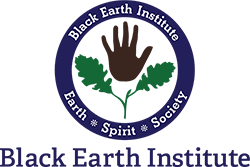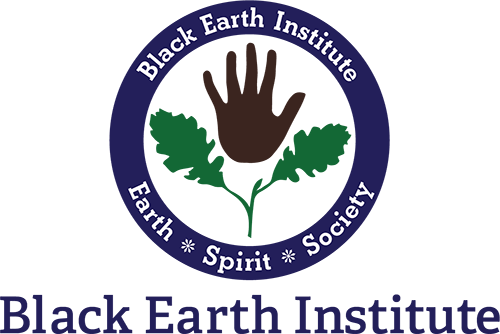
Photo credits, clockwise from upper left: Time Magazine, Wikipedia, CBC, The Boston Globe
by BRENDA PETERSON
Power in the Blood: The Religious War Over Abortion
“Grant paradise to be the womb . . . and Eden, the placenta.”
–Gnostic Teacher Simon Magus
As quoted by Hippolytus, Ref. 6:14, cited by Elaine Pagels in The Gnostic Gospels
Women’s March, Washington D.C. January 21, 2016, photo credit: C. Finnegan
Why is America still fighting this war over a woman’s body, when equally religious countries, like Ireland and Mexico, have made peace? As the U.S. Supreme Court signals its intent to soon overturn Roe v. Wade, will women again rise to protect their decades-long right to choose to have a child?
The day after the 2016 Inauguration, 3.5 million women and men marched to protest the Trump administration’s vows to defund Planned Parenthood and revert abortion from a woman’s right to a crime. Conspicuously missing in this largest protest march in our nation’s history were the anti-abortion women, most of them white Christian evangelicals, who by 80 percent voted for Trump and his vow to overturn Roe vs. Wade. Now, with the recent Texas laws restricting abortion—and other Republican states eager to enact similar anti-abortion agendas—the Far Right is poised to fulfill this patriarchal promise—God as the all-powerful Father. Where is the Mother in this divine right?
And what about women’s power? We must look deeper than political arguments to the spiritual roots of this struggle. In the abortion debate, the two sides do not speak the same language. How can a woman who carries a sign “Jesus Hears Their Tiny Screams” converse with another whose sign states: “Abortion: Every Woman’s Birthright!” It’s like a screaming match between two tribes who offend each other simply because they occupy the same territory–in this case, a woman’s body.
We must go back to pre-patriarchal history to discover a well-documented body of scholarship on the ancient cultures, whose spiritual life was centered in the rites of biological motherhood and the Earth as feminine Goddess–Gaia, as the Greeks named her. Archaeologist Marija Gimbutas calls this the “Goddess or Great Mother cultures” in prehistoric European civilizations. Gimbutas writes: “There are no depictions of arms (weapons used against other humans) in any Paleolithic cave paintings.” Richard Leakey’s research also defines early humans of several million years ago as peaceful and cooperative. These cultures are noted for their flexibility, their egalitarianism, the strong bonds between mothers and children. This was our way of life until around 3000 B.C., when the advent of the Bronze Age and the warrior tribes produced weapons and a vengeance-seeking God the Father who denied and disappeared the feminine balance of God the Mother.
I well remember a hymn, “Power in the Blood,” from my Southern Baptist childhood–a soundtrack to this warrior god’s war on women.
Would you be free from your burden of sin?
There’s power, power, wonder-working power
In the precious blood of the Lamb
The Lamb in this hymn is not a fetus, it is Christ bleeding on the cross. The power in these blood rites has to do with sacrifice of the divine son. Had Christ been a divine daughter, her bloodshed would have been a sacred ceremony, a law. Earlier cultures and religious traditions believed in the spiritual authority of women’s blood and sacrifice. They were synonymous in the Great Mother cultures with the blood of birth and fertility. The twin powers of birth and death belonged first to woman. Just as the first way we told time was by women’s cycles: twenty-eight days between menstruations, twenty-eight days of the Moon’s cycle. The Moon was said herself to be “menstruating” as she fulfilled her fertile course, from waxing fullness to waning death to rebirth. Everything was in relationship to the circle, the whole. And in the center of this cycle were the Great Mother deities in reverence and sync with the Earth’s seasons.
In those days it was not Jehovah, but the Great Mother who “giveth and taketh away” and whose name was nevertheless blessed. The root meaning of the word ritu or ritual is “menstruation.” For our ancestors, crossing the threshold from girlhood to womanhood was dramatic and awe-inspiring. The wonder of it all: a body bleeds, cleanses, and is reborn. A body does not bleed for nine full moons and so gives birth to another body. How powerful and mysterious, then, this women’s blood. No wonder this blood was saved, used to fertilize crops, and precious drops offered in only the most sacred ceremonies.
The Old Testament lamb that was later ritually sacrificed was an imitation of these menstrual rites. Jehovah borrowed power from the feminine blood to make His own ceremonies. The blessing and power of those early Great Mother cultures’ blood became the feminine “curse” and transmuted into the masculine warfare (blood-shedding) myths of the Old Testament. Whereas the New Testament Christ is more feminine–virginal, non-violent, and compassionate. But the feminine element in Jehovah’s son is unrecognized, just as any feminine partnership with God the Father is denied.
Is it any coincidence, then, that this more feminine New Testament Christ is also missing from the pro-life crosses? When did bloody fetuses usurp Christ’s sacrifice? Do fetuses fulfill his role—to bring redemption and forgiveness? Do the pro-life women carry their own crosses because their roles as mothers is the only salvation a patriarchal god allows them? If these women really made themselves in Jehovah’s image, wouldn’t they be the first to understand sacrificing a child—because sacrificial death in the New Testament brings eternal life?
The anti-abortion movement is anchored in this Old Testament’s patriarchal denial of a woman’s power. It’s even in our language. The word hysteria has its root in the word womb; the word testament in the word testicle, or “male witness.” Hysteria is now used by psychology to describe feminine dysfunction; testament is considered a sacred covenant “between God and man.” Thus, the testicles can tell the truth; the womb lies. If a woman’s womb lies and she is hysterical, isn’t it then assumed that she can no more judge who lives and who dies, who has the power to “giveth and taketh away?”
In American culture, the pro-life zealots presume that the act of killing presupposes an enemy. In the older, matrilineal cultures, the taking of an unborn child’s life was seen as a sacrifice, which in its original Latin means “to make sacred.” As French scholar, Ginette Paris observes in Pagan Meditations: “One aborts an impossible love, not a hatred.”
Some tribeswomen speak to the spirits of their unborn children before performing their ritual abortions. After the act, the woman is received by her tribal sisters and comforted in her grief, her loss, her somber choice.
Many of us who have been fighting for reproductive rights for generations feel familiar grief over the imminent loss of our “settled law” on abortion. Many of us are old enough to remember losing beloved friends to botched abortions when it was illegal. Many young people have no idea of what awaits them when they lose that power over their own bodies and future. I do believe we are enduring the last gasp of the patriarchy, and this may well be the turning point: When we act together to resist the attempt to steal away our physical, political, and yes, spiritual authority. Biology will out: the feminine will one day finally over overcome the patriarchy and give birth to the future. That is the timeless, wonder-working, feminine power in the blood.~
Link to a relevant article via The Atlantic.
Brenda Peterson is a novelist, nature writer, and memoirist, author of over 20 books, including Your Life is a Book, selected by Oprah.com and the memoir, I Want to Be Left Behind: Finding Rapture Here on Earth, an Indie Next, “Great Read” chosen by independent bookstores and a “Best Non-Fiction Book of the Year” by Christian Science Monitor. Her work has appeared on NPR, in The New York Times, Orion, Tikkun, and Oprah magazine. Her most recent book, Wolf Nation: The Life, Death, and Return of America’s Wild Wolves was selected as a “Best Conservation Book of the Year by Forbes. Her children’s books are Leopard and Silkie, Wild Orca, Lobos, and Catastrophe by the Sea. This essay is updated from Nature and Other Mothers: Stories of Women and the Body of Earth. For more: www.BrendaPetersonBooks.com
Women’s March, Seattle, WA photo credit: J. Smith

